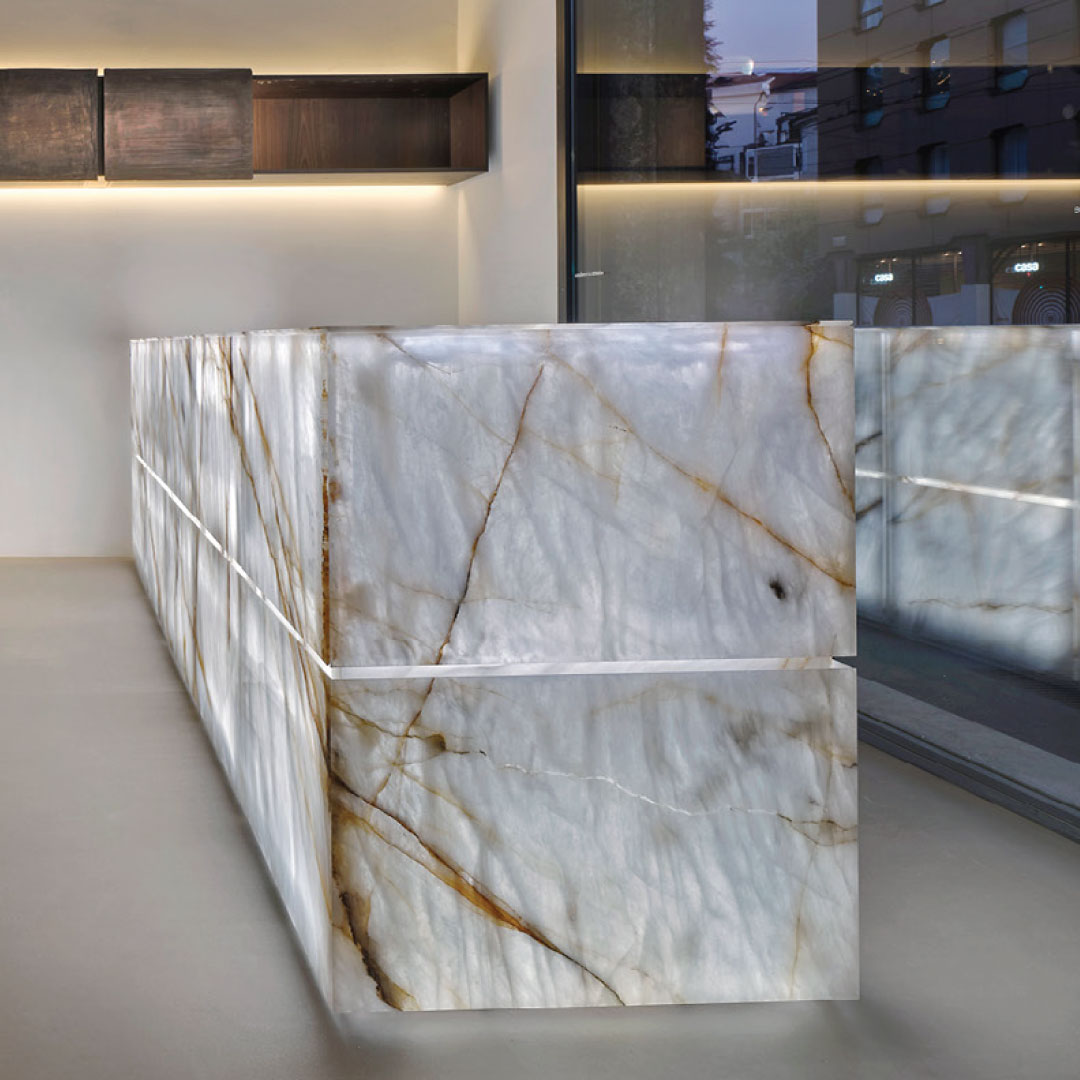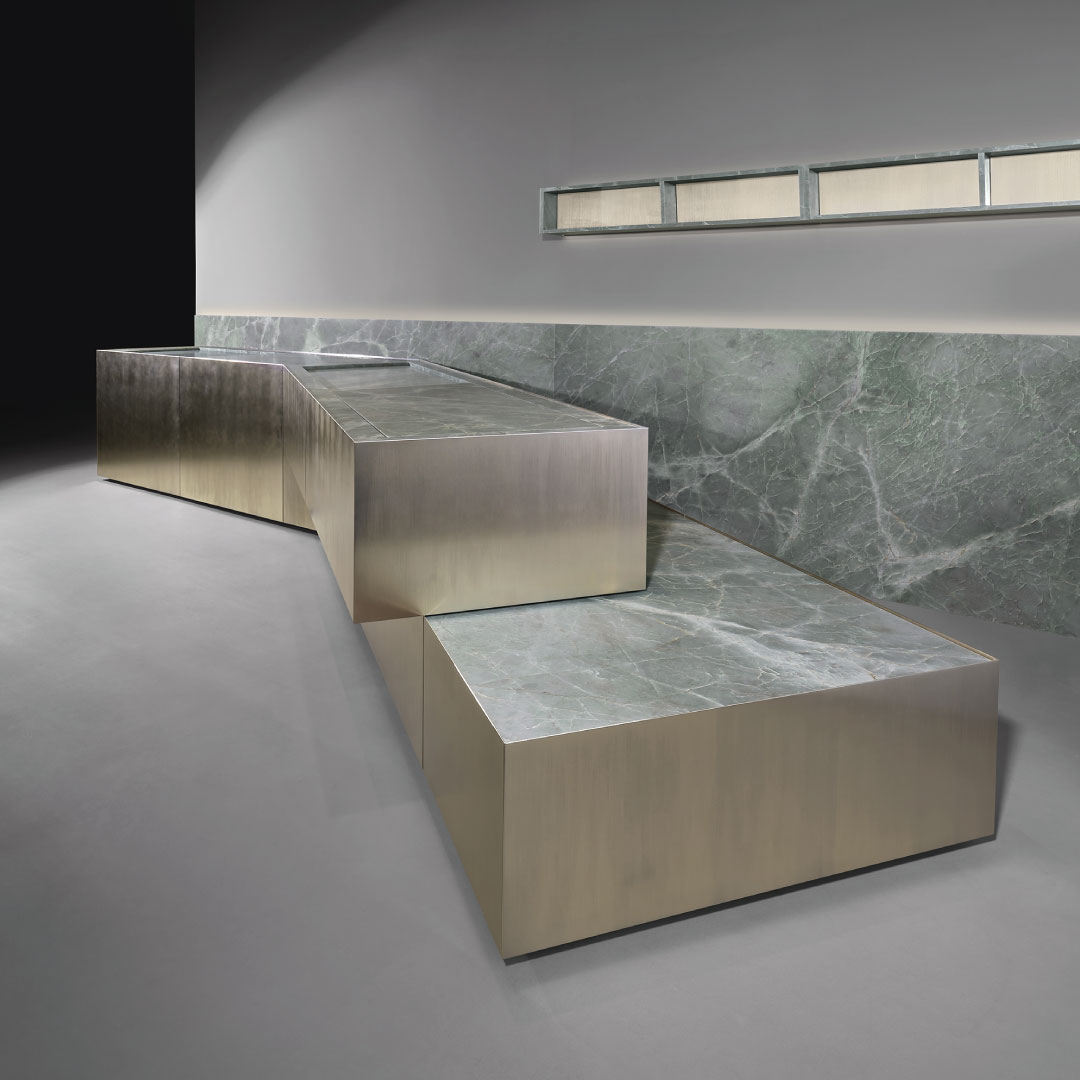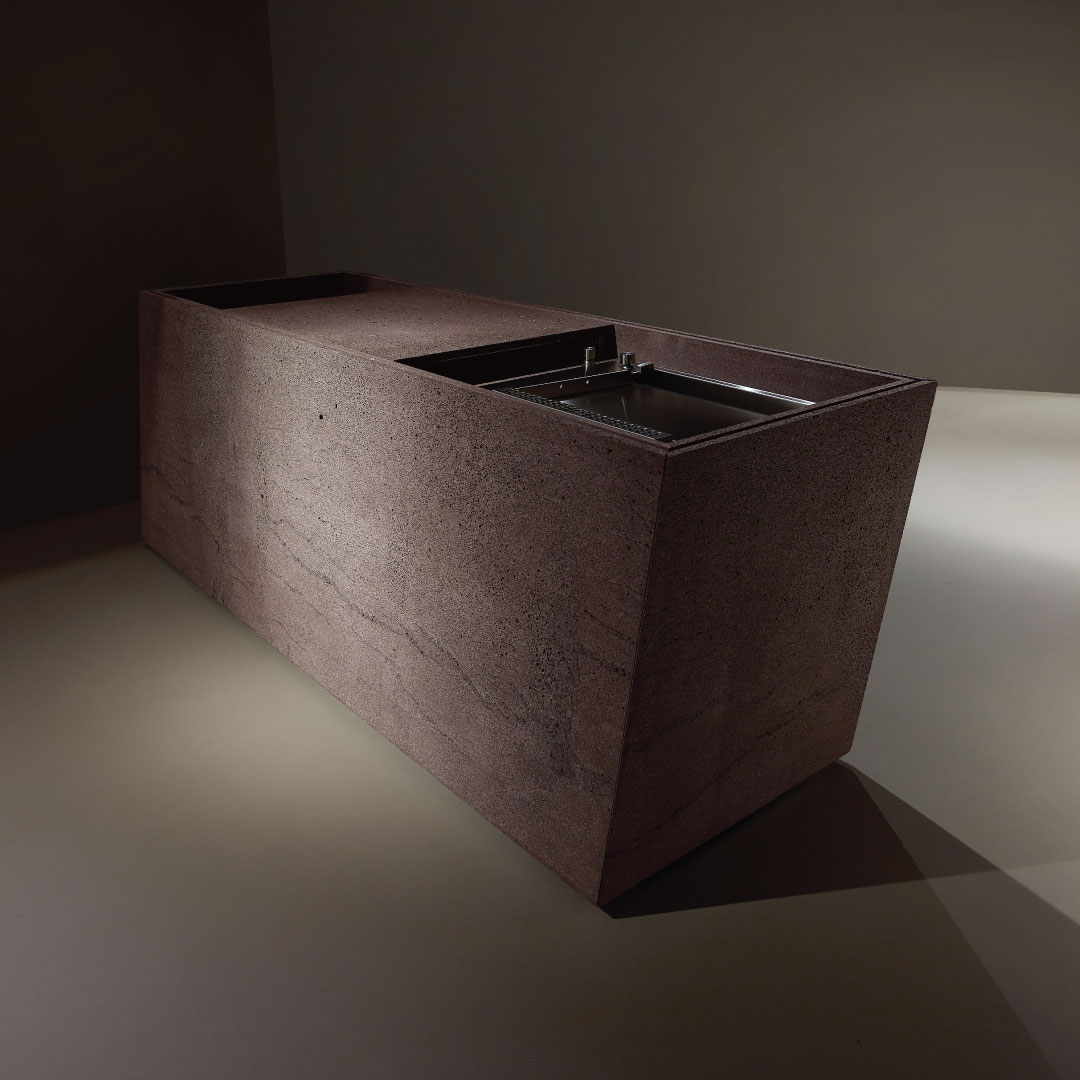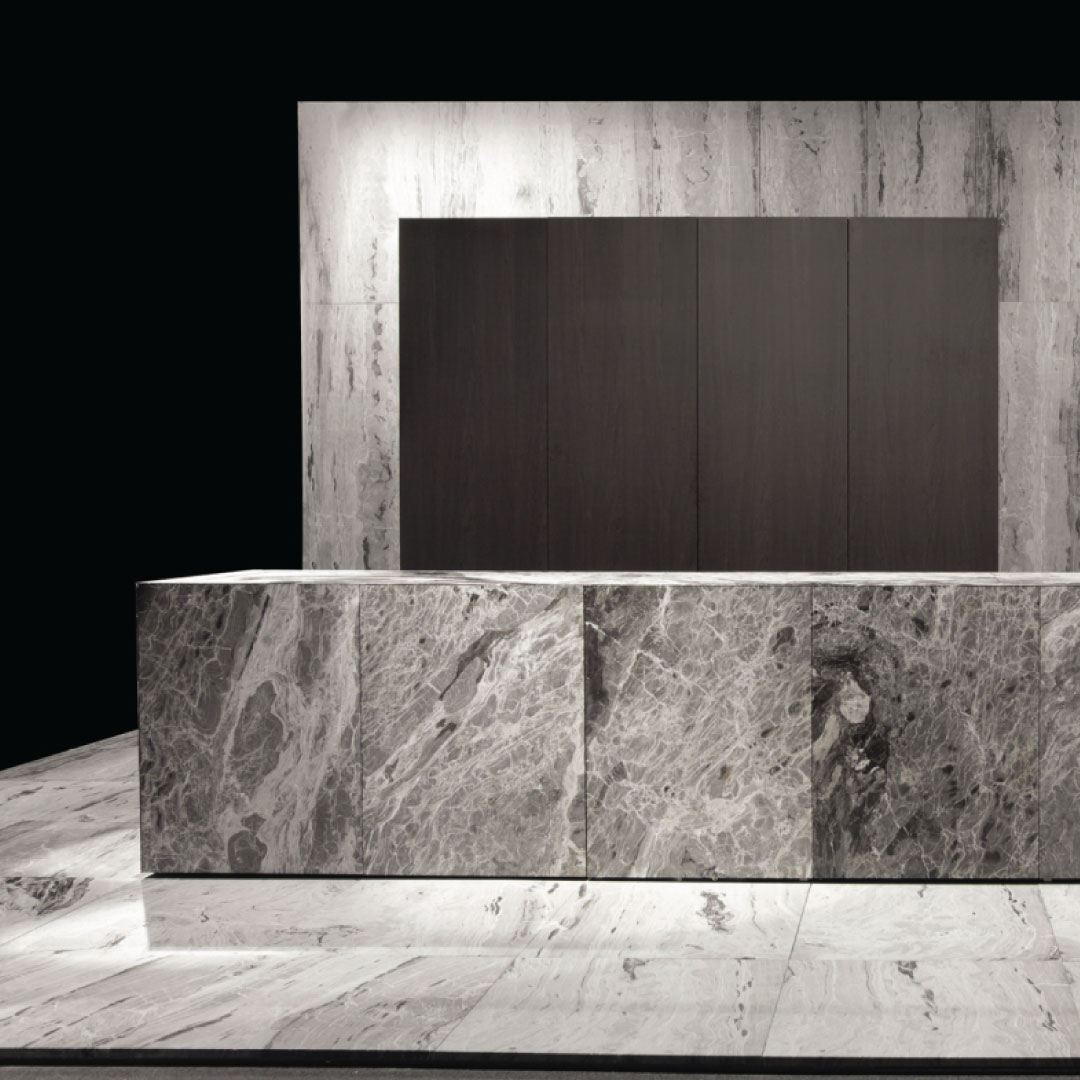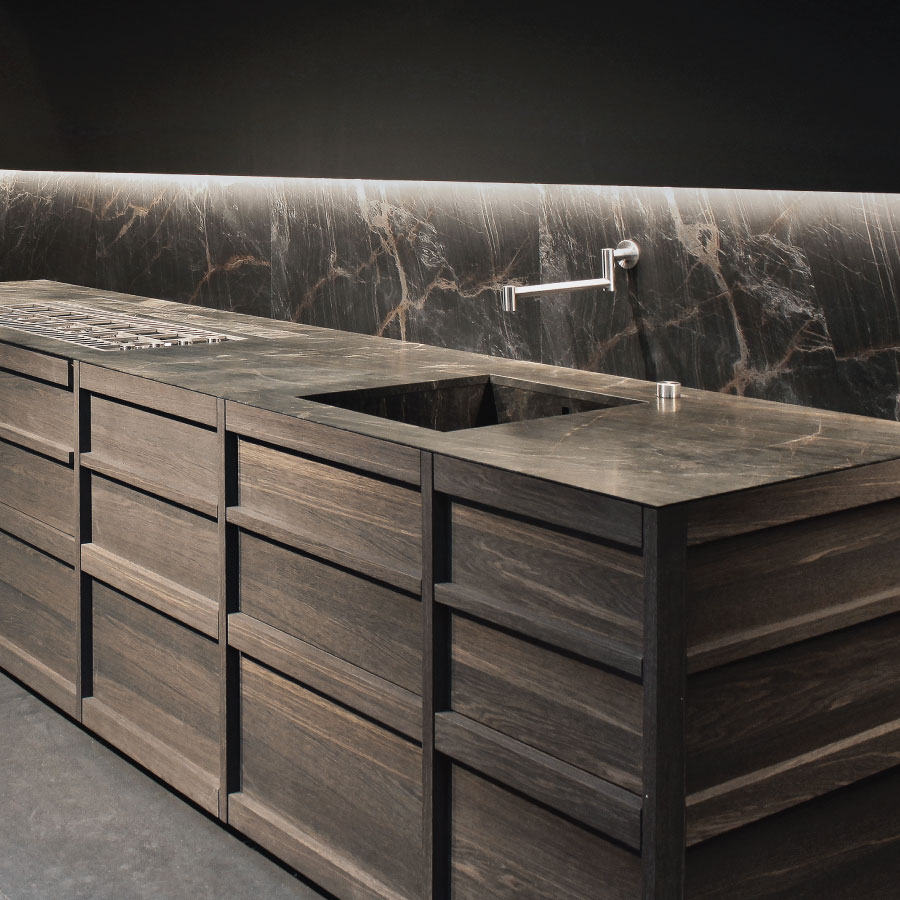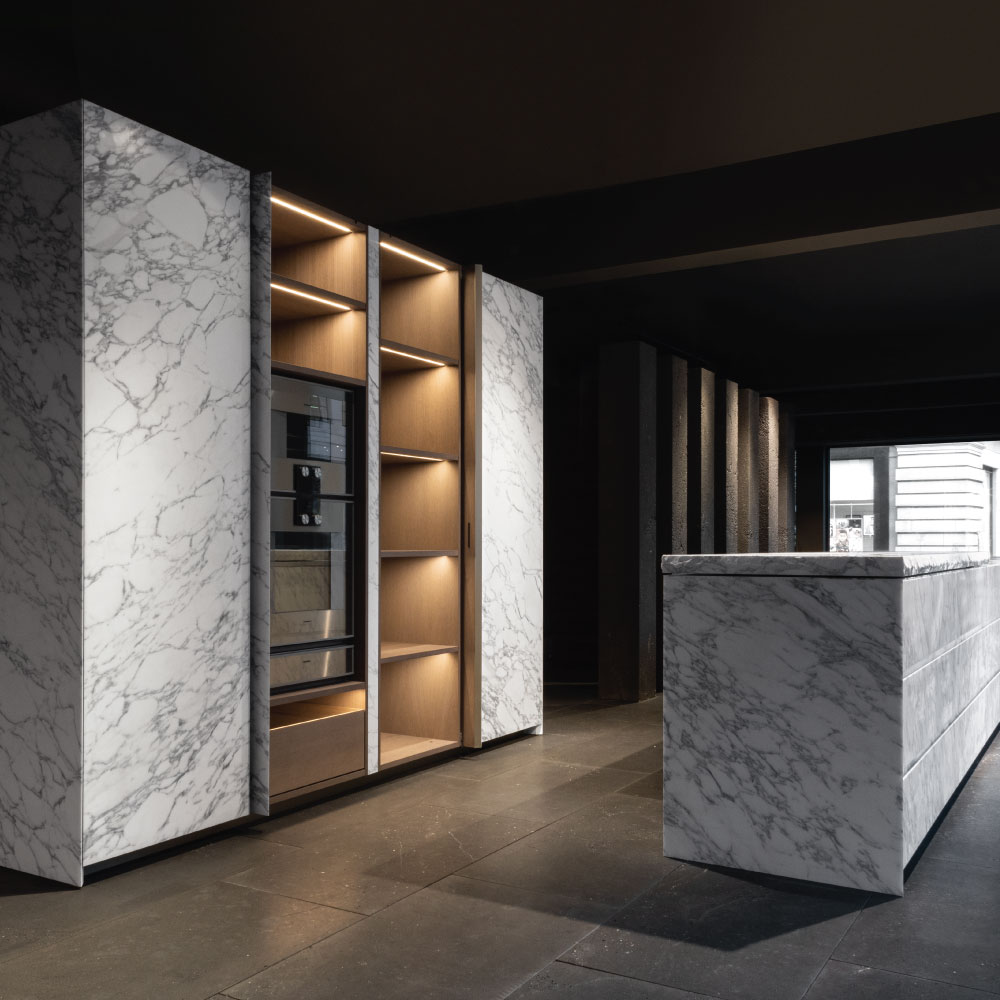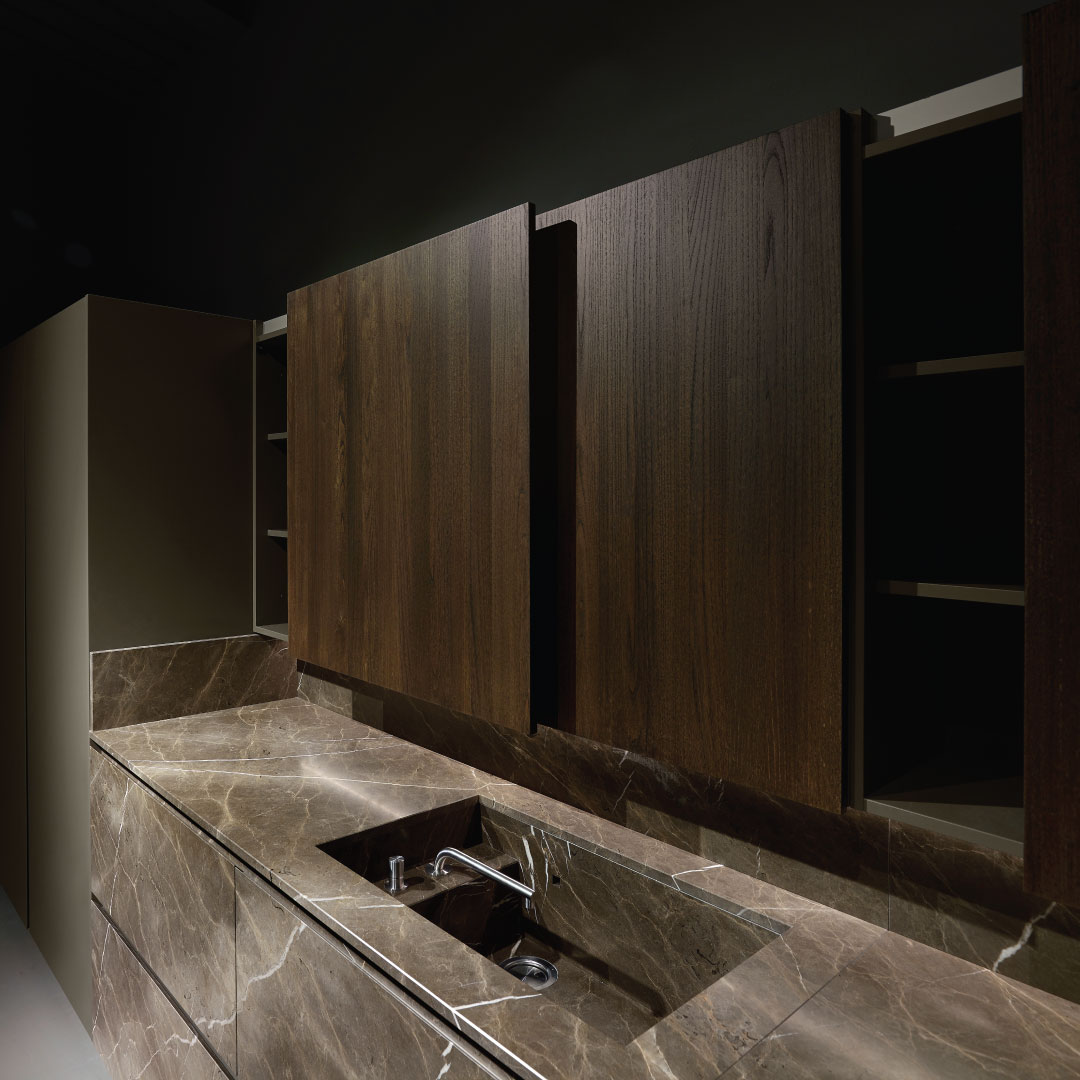


terra – design claudio silvestrin
The earth, with its waters, its forests, its mountains, is extraordinarily beautiful in its essence, in its naked and silent presence. Unlike everyday artifacts where use and function are predominant, the earth is what it is, regardless of who we are, what we do, and the functions we give it. When thinking about the terra kitchen, i imagined an object that, as useful and functional as it may be, manifests with the same strength as nature: solid, timeless, abstract. The 45° angle between the worktop and the fronts, along with the small vertical and horizontal incisions, determine a surface characterized by the presence of regular and rhythmic geometries. Even the tall units are distinguished by the same module. A special edition of terra is made of cast bronze. It teeters on the edge between art and technology, capable of evolving natural elements with human ingenuity, recreating a perfect balance between provocation and simplicity. “A pure force, in perfect balance between the forces of nature and human strength, an element of weight and art.” today, another special edition is the new terra light, a kitchen made with a material that allows the passage of light, such as the exclusive vitrum wow crystal stone by antolini. Here, the finish of the kitchen is not only the stone but also takes on the finish of light. In fact, this special edition of terra allows natural light from a window to pass through it, naturally outlining the shape of the kitchen. It is an exclusive project that incorporates into the kitchen design the characteristics of a work of art, interactive with the surrounding environment, transforming it into a sculptural and contemplative installation. In the evening, technology intervenes, illuminating the kitchen with an internally fitted led system, carefully designed and distributed across the entire surface of the project.
maya – design alberto minotti
It is suspended and seems to fly. or its opposite: It is firmly anchored to the ground, like a natural extension of the floor. Moreover, it combines both dimensions proposed in double depth. In aluminum, as light as it is resistant, it actually hides a heart of stone and three-centimeter high solid worktop: A major thickness that we have nullified and hidden in only seven millimeters. In this way the protrusion of the upper edge of the composition is infinitesimal, containing the top and becoming functional when opening and closing the modules with no handles or channels. A kitchen with sculptural volumes, maya can be composed of single bases, resting on the floor or suspended, and double-depth bases.
minotticucine / asso spa today confirms its iconicity linked to the cold material, with a new minimalist and particularly precious look. The gold 24K.
incline – design alberto minotti
The stone and the natural materials with which we create all our compositions resist time and its elements for millennia, and continue to do so even when the kitchen breaks the boundaries of the house to get out and colonize exterior spaces with a dual function: embellish the outdoor and barbecue, grill, cook. In incline, which perfectly marries the principles of minimalism and visual silence, we meet many peculiarities all contained in an inclined monomaterial monoblock. A perfect angle allows the use of each side to form a composition that, without elements of discontinuity, presents itself as a unique and groundbreaking piece, the absolute protagonist. Much more than a kitchen island, incline looks like a rock in the gardens. An outdoor monoblock kitchen, it has a core in austenitic stainless steel, gas barbecue with sliding stone cover. A stone sink with hidden drain and the water source straight from a hole in the stone. At the end, two austenitic stainless steel baskets open by means of ball guides, also made of steel.
inca – design alberto minotti
“Let no man ignorant of geometry enter here”: it is this sentence of the greek philosopher plato which has inspired us. Respecting the geometric purity of the essential forms, we have raised the lines on the pedestal that run upwards from the bottom, pushing the principle of subtraction to the extreme. The natural elements match and complement each other in an exquisite example of a refined, simple and elegant combination. Inca presents itself with a vertical rhythm given by the channels that punctuate the form of the composition. The thickness of the worktop blots out the thickness of the doors by drawing a single perimeter line that unites, without visual distraction, different materials and finishes. The verticality remains the protagonist and the 45 ° door edges and worktop uniquely characterize the kitchen volume identity. The associated columns have the same vertical channels.
hanami – design alberto minotti
The lines of hanami originate in japan. In this far-eastern land, the wall is shoji: without doors or windows, it contains everything in a single design. Lightweight in paper and wood, it filters the light in a natural way almost like an opening, a window. And again, its wooden slats mimic the function of the doors becoming opening handles and lead to another room or the outside. Like this linear game of natural materials and geometric balances, hanami uses the set of wooden slats as handles, creating a simultaneous interplay of shadow and light that hide the joints of the furniture piece. Wood as its maximum expression is proposed in a single-material key on both the doors and the handles and adapts to various solutions of openings: from the whole door, to the double basket and to the drawers. In all cases the signs disappear before the eye in a specific and ordered compositional scheme of strips. An exciting collective made of individual elements that become one to the eye. Combined with stone tops, it reproduces the japanese essence of cherry blossoms.
gandhara – design alberto minotti
It’s magic. Playing with the angular degrees of vertical and horizontal surfaces, we managed to make the worktop disappear. It’s there but can not be seen. This alchemy is made possible by the perfect 45 ° cut between the doors and the top: the two elements fit together, camouflaging the thicknesses and giving lightness to the whole kitchen unit. By subtracting the worktop we have once again married and realized the minimalist spirit that distinguishes our every evolution. Gandhara is characterized by grooves with horizontal lines that emphasize the length of the kitchen lengthening the point of view. The worktop is presented with 45 ° edges allowing a clean and continuous joint with the doors, also with an identical cut. This is our first creation in which the worktop and the fronts of the baskets match to the millimetre. A harmony of balanced forms that, we believe, is able to express its potential in dark tones.
atelier – design alberto minotti
Probably our most versatile offering, it preserves the strong and timeless values of rock. With atelier, free expression is given to the naturalness of the element that rebels against human technique and expresses itself in all its raw and genuine form. Developed horizontally, it exudes craftsmanship thanks to the split edge. Laterally, the worktop is not clean cut but chiseled: a particular that makes this composition an authentic emotion. The split edge is therefore true and pure empathy that we have used also on counters of other models. Atelier is the quintessential kitchen design thanks to the many variations of available finishes and composition. The worktop is the protagonist and can be customized: as well as split, it can have a straight or a ribbed 60 ° edge to enhance its cleanliness and lightness.
anima – design alberto minotti
The block kitchen. Each block is a cube with its own function. Anima is proposed with exclusive details in perfect harmony with the stone, which becomes the most suitable material for a kitchen made with a strong tangible spirit. The joints of the worktop, a congenital and essential detail of all the large surfaces created with natural materials, represents an obstacle to visual continuity. To eliminate this sign the kitchen is in detached blocks. Every single element, cubic, has a different and autonomous function: cooking, preparation and washing. The most significant technical advancement of anima is its platform on which the blocks are positioned. Moved back and hidden, it is an extremely functional structure as it includes all the systems adding to the kitchen the ergonomics of a plinth.


